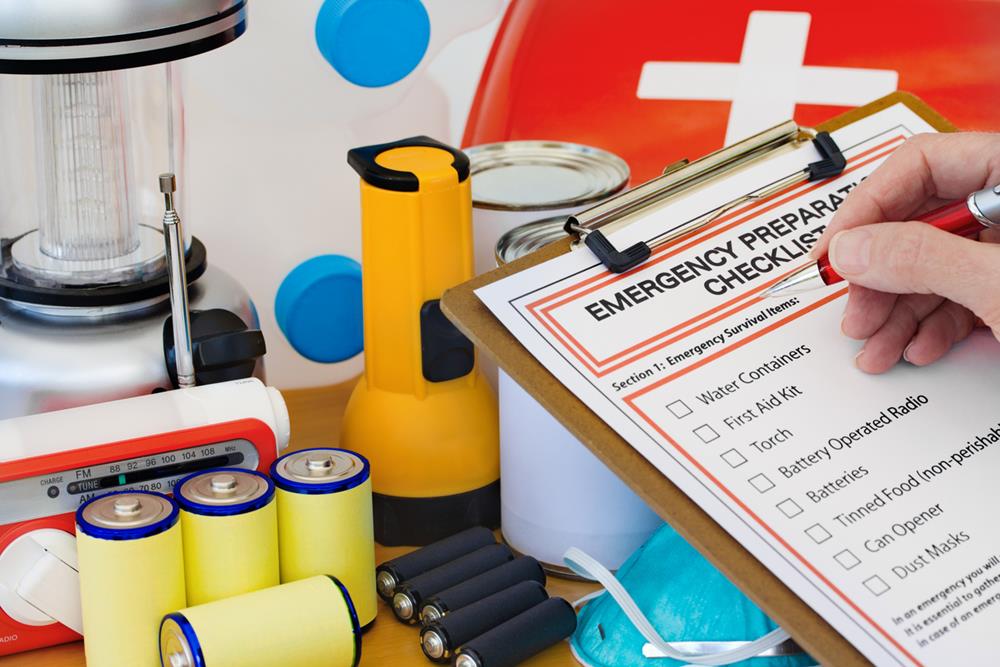DFW’s Disaster Preparedness - Safety & Supply Hubs

DFW's vulnerability to tornadoes, floods, and extreme weather requires you to prepare thoroughly. Stock your emergency kit with three days of water, non-perishable food, medications, and protective clothing. Store critical documents in waterproof containers and establish family meeting points.
Access local resources through the North Texas Food Bank, American Red Cross shelters, and Tarrant County Office of Emergency Management supply retailers. These steps will help your family navigate the unique disaster challenges our metroplex faces.
Understanding the DFW Metroplex's Vulnerability to Natural Disasters
The DFW Metroplex sits squarely within Tornado Alley, making it particularly vulnerable to multiple natural disaster threats throughout the year. You'll face not only the risk of destructive tornadoes but also severe flooding from the region's numerous rivers and waterways.
Extreme drought conditions frequently elevate wildfire risks, threatening homes and businesses across the area. When powerful storms strike, they often cause widespread power outages that can disrupt critical infrastructure for days.
Historically, Grapevine, Garland, and Rowlett have endured damaging tornadoes, including the EF4 tornado that struck parts of Garland and Rowlett in December 2015, causing widespread home destruction. More recently, North Dallas and Richardson were impacted by a powerful EF3 tornado in 2019, which tore through residential areas and damaged schools and shopping centers.
Flooding is also a serious concern in low-lying parts of Arlington, Denton County, and the Trinity River corridor, especially in Irving and West Dallas, where poor drainage has led to flash floods during heavy rainfall events. Meanwhile, parts of Parker County and Wise County are increasingly prone to wildfires during drought years, exacerbated by dry brush and intense summer heat.
The region's unique geography creates a perfect storm of disaster potential that every member of your household should understand. Recognizing these vulnerabilities is your first step toward creating an effective preparedness plan that accounts for the seasonal and unexpected threats common to North Texas.
Essential Emergency Kit Components for North Texas Residents
Now that you understand the risks facing your home, it's time to assemble your emergency kit tailored specifically for North Texas conditions. Start by securing at least three days' worth of water and non-perishable food for each household member. Don't forget secure water storage containers to preserve this essential resource.
First aid essentials should include a comprehensive kit, toiletries, necessary medications (both prescription and over-the-counter), and comfortable bedding. Protective clothing is pivotal—sturdy boots, long-sleeve shirts, and thick gloves will shield you during cleanup efforts.
Emergency power sources such as battery packs or solar chargers are indispensable during outages common in North Texas disasters. Finally, store important documents and cash in a waterproof bag for quick evacuation. These preparations will help you withstand any disaster our region may face.

Critical Documents and Evacuation Supplies for DFW Households
When disaster strikes the DFW area, having your critical documents organized and accessible can mean the difference between a smooth evacuation and a chaotic one. Store property deeds, insurance policies, passports, wills, and emergency cash in water-resistant document containers inside your portable emergency packs.
Don't forget to include copies of prescriptions and maintain a supply of necessary medications. Your evacuation supplies should feature sturdy boots, long-sleeve shirts, and thick gloves for protection when returning home after a storm.
Prepare bedding and toiletries for shelter use, and ensure your family communication plans are well-documented and accessible. Keep a separate waterproof pouch with document copies and emergency contacts for quick reference during the confusion of evacuation.
Building Family Resilience Through Emergency Preparedness
Building family resilience extends beyond document preparation into comprehensive emergency readiness. You'll need to develop proactive communication strategies that everyone understands before disasters strike.
Conduct regular household preparedness drills to guarantee your family can respond effectively when seconds matter.
- Create designated meeting points both near your home and across town
- Stock emergency kits with 72 hours of water, food, medications, and first aid supplies
- Practice various evacuation scenarios monthly, timing your family's response
- Store important documents in waterproof containers accessible during evacuations
- Connect with community disaster response networks to strengthen neighborhood support
Your family's ability to endure crises improves dramatically when you've planned for alternative power sources like generators or solar-powered chargers. Remember, the resilience you build today becomes your lifeline tomorrow.
Local Resources and Supply Hubs Across the Metroplex
View this post on Instagram
Throughout the Dallas-Fort Worth Metroplex, a robust network of emergency resource centers stands ready to support residents when disasters strike. You'll find North Texas Food Bank distribution sites strategically positioned across the region, providing emergency food supplies during crises.
When seeking shelter, the American Red Cross operates multiple locations that distribute relief items through established community partnerships. For specific supplies, consult the Tarrant County Office of Emergency Management's extensive list of disaster supply vendors.
The Dallas Office of Emergency Management coordinates regular preparedness fairs through volunteer and outreach programs, offering valuable resources before emergencies occur. Additionally, the Texas Division of Emergency Management designates facilities across the metroplex as aid distribution centers, ensuring residents have access to state and federal assistance during large-scale disasters.




